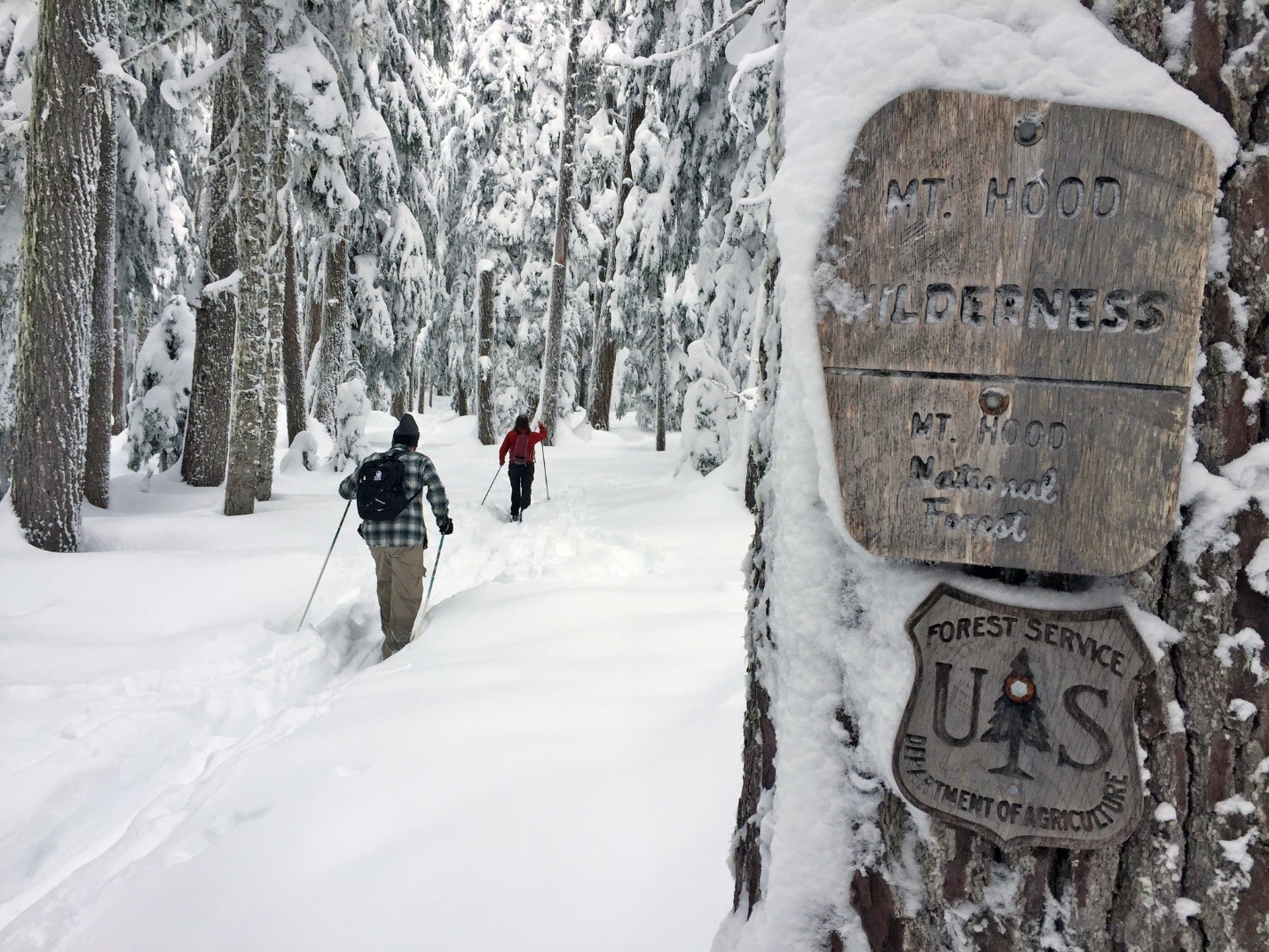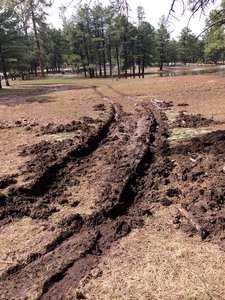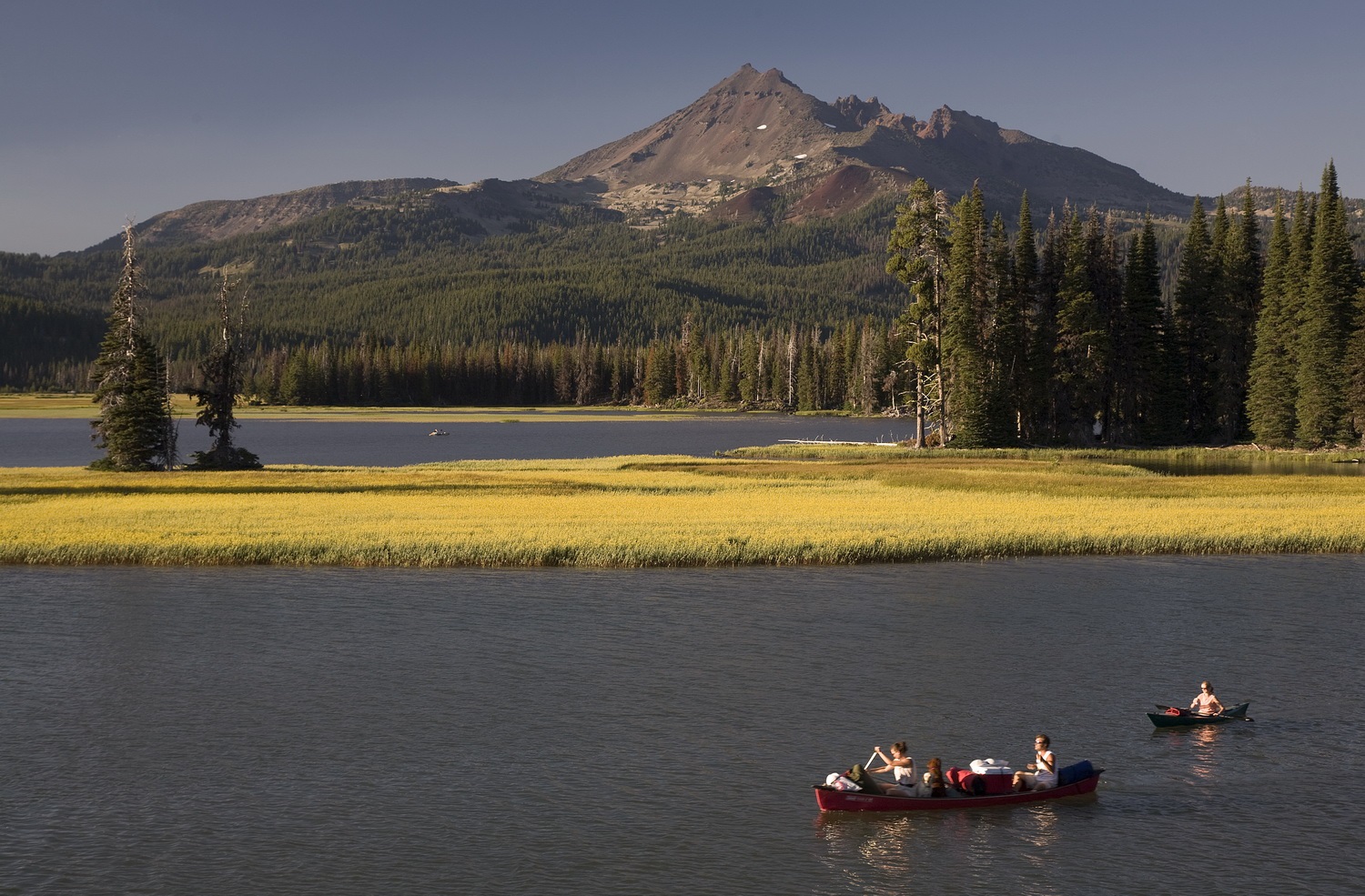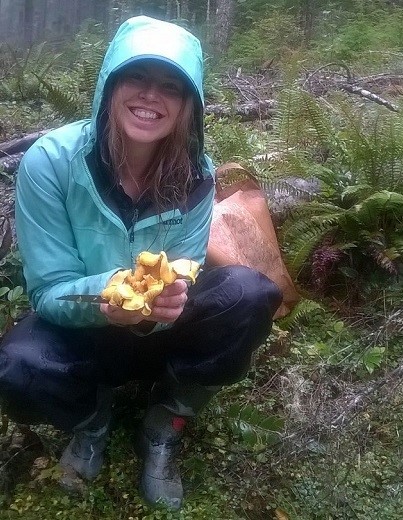Sensitivities
A. Higher winter streamflows will lead to increased damage of roads, trails, campgrounds, and other infrastructure.
B. Increased flooding will reduce the number of operational and functional campgrounds, possibly shifting visitor use to campgrounds that are less equipped to handle regular high volumes of visitations, as well as reduced services, and higher concentration of use to fewer facilities.
C. Increases in flooding, wildfire, and other natural disturbances are expected to increase infrastructure damage.
D. Ice- and snow-based recreation is highly sensitive to increases in temperature and the amount and timing of precipitation.
E. Increasing length of snow-free season will increase demand for shoulder recreation access.
F. Higher temperatures and lower summer streamflows will decrease suitable sites for water-based recreation, but demand will likely increase.
G. There will be uncertainty about the seasonality and availability of non-commercial forest products (e.g. berries, mushrooms, Christmas trees, boughs, firewood) with climate change.
A. Sensitivity: Higher winter streamflows will lead to increased damage of roads, trails, campgrounds, and other infrastructure.
Explanation
In a warmer climate, more precipitation will fall as rain rather than snow, and snowpack will be reduced, leading to higher winter streamflows (Hamlet et al. 2005, Hamlet and Lettenmaier 2007). This will lead to increased likelihood of damage to infrastructure, requiring more maintenance and replacement of infrastructure, and road and trail closures (Strauch et al. 2015). In particular, higher peak flows lead to increased road damage at stream crossings (because of insufficient culvert capacity, more culvert blockage, and low bridges). Access and safety will be compromised by more extreme flood events (Strauch et al. 2015).
Practices
Increase resilience and protect recreation facilities, historic and cultural sites, and points of diversion from flood damage
- Restore watershed function by reconnecting stream channels to floodplains, dispersing flow and reducing the intensity of flood events in campgrounds and other facilities
- Identify and relocate recreation facilities (e.g., campgrounds, picnic areas, specific campsites) to locations that are less likely to flood frequently
Increase resilience of trail systems to higher peak flows
- Identify high-priority trails and bridges to be repaired, replaced, rerouted, or decommissioned based on flood risk, amount of use, and other factors. Consider future peak flows in design of new trails and bridges. For existing trails, consider rerouting trails in locations that eliminate the need for trail bridges, increasing the height of bridges above waterways, or upgrading trail bridges with stronger parent material, if possible.
Increase resilience of stream crossings, culverts, and bridges to higher peak flows
- Replace culverts with higher-capacity culverts or other appropriate drainage (e.g., fords or dips) in high-risk locations
- Complete geospatial database of culverts and bridges
Facilitate response to higher peak flows by reducing the road system and thus flooding of roads and stream crossings; disconnect roads from streams
- Continue to decommission roads with high risk and low access
- Convert use to other transportation modes (e.g., from vehicle to bicycle or foot)
- Use drains, gravel, and outsloping of roads to disperse surface water
Minimize risks to public safety
- Evaluate and monitor timing of visitor use relative to hydrologic dynamics.
- Limit visitor access when safety is a concern
- Post educational signs about potential danger of flood events due to changing weather conditions (e.g., rain-on-snow events, thunderstorms) and escape routes.
Increase capacity of trained people to evaluate and respond to hazard-tree situations
- Continue to provide staff training and raise awareness of hazard-tree policy and practices
- Increase the number of qualified hazard tree inspectors, and provide contact information to efficiently dispatch qualified inspectors.
- Increase the capacity to rapidly communicate and implement recommendations of inspectors in order to restore safe access and conditions
B. Sensitivity: Increased flooding will reduce the number of operational and functional campgrounds, possibly shifting visitor use to campgrounds that are less equipped to handle regular high volumes of visitations, as well as reduced services, and higher concentration of use to fewer facilities.
Explanation
A warmer climate with lower snowpack and more rain on snow is expected to cause more frequent and higher magnitude floods (Hamlet et al. 2005, Hamlet and Lettenmaier 2007). Because many campgrounds are in and near floodplains of large streams, access may be limited, and safety risks for recreationists could increase (Strauch et al. 2015).
Practices
- Analyze how climate change will affect visitor-use patterns in existing campgrounds and identify locally appropriate sustainable recreation practices
- Identify campgrounds prone to flooding and prevent flood damage such as relocating recreation facilities (e.g., picnic areas, specific campsites) and structures (e.g., bathrooms, picnic tables) to locations with lower flood frequency; implement communication strategies to educate public on the importance of relocating sites out of potential flood areas
- Plan for higher maintenance costs associated with more flooding
- Identify campgrounds and other recreational facilities that will likely to be costly or unrealistic to be maintained based on future climate projections; accept the loss of those sites to optimize funding allocation and to mitigate risks to public safety
C. Sensitivity: Increases in flooding, wildfire, and other natural disturbances are expected to increase infrastructure damage.
Explanation
A warmer climate with lower snowpack and more rain on snow is expected to cause more frequent and higher magnitude floods (Hamlet et al. 2005, Hamlet and Lettenmaier 2007), and increasing drought is expected to cause more frequent and larger wildfires (Littell et al. 2016). Recreation facilities can be severely damaged or completely destroyed if the disturbance is severe.
Practices
Manage recreation sites to mitigate risks to public safety and infrastructure and to continue to provide recreation opportunities
- Determine which recreation facilities, infrastructure, and campsites are at risk from increased flooding and other natural hazards
- Increase capacity for rapid post-disturbance evaluations and planning
- Prioritize post-disturbance treatments, such as relocation, arming, and other mitigation measures to mitigate risks to public safety and infrastructure
- Invest strategically in developed recreation facilities, prioritizing those that will be viable in the future and accommodate changing use patterns
D. Sensitivity: Ice- and snow-based recreation is highly sensitive to increases in temperature and the amount and timing of precipitation.
Explanation
With warming temperatures, snowpack will decrease, particularly at low to mid elevations (Hamlet et al. 2005). Snow- based recreation will no longer be possible in these locations in some years. The length of the winter recreation season will also likely decrease (Hand et al. 2017).
Practices
Transition recreation management to address shorter average winter recreation seasons and changing use patterns
- Invest strategically in infrastructure that supports winter recreation, prioritizing those that will be viable in the future and accommodate changing use patterns
- Consider options for diversifying snow-based recreation (e.g., cat-skiing, helicopter skiing, additional ski lifts, higher-elevation runs, toboggan runs, snow making, and backcountry yurts)
- Invest in temporary or mobile structures to adapt to higher variability in seasonal changes (e.g. adjustable snow park system based on snow levels, portable toilets in lieu of permanent toilets)
- Invest strategically in infrastructure that supports winter recreation, prioritizing those that will be viable in the future and accommodate changing use patterns
- Engineer road and trail systems for travel during wet weather
- Increase capacity to conduct hazard-tree assessments and implement recommended actions
E. Sensitivity: Increasing length of snow-free season will increase demand for shoulder recreation access.
Explanation
A warmer climate with less snowpack will increase opportunities for warm-weather recreation, especially in the spring and autumn shoulder seasons (Hand and Lawson 2017). This will increase access at low to mid elevations, and earlier access to high elevations at times when facilities may not be open and seasonal employees are not on staff to assist with management of sites and trails (Hand and Lawson 2017).
Practices
Maintain safe access for recreation
- Educate the public about risks associated with early- and late-season access
- Consider opening recreation facilities and performing trail logout and maintenance earlier in the season when budgets allow
- Limit access when public safety is a concern
- Conduct risk management at developed sites prior to opening developed recreation facilities.
- Plan for fire, flood, and geohazard evacuation and safety
- Develop hazard tree management strategies in coordination with ecosystem restoration efforts
- Educate the public about changing conditions (e.g., avalanche hazard, river flows)
Increase flexibility and capacity for managing recreation resources, and provide sustainable recreation opportunities in response to changing demand
- Assess changes in use patterns and identify demand shifts; consider the need to identify use thresholds and site capacity in relation to both visitor experience (e.g., potential for user conflicts) and the need to protect other resources
- Identify where the timing of actions (e.g., opening and closing roads and recreation facilities, performing trail maintenance) should be adjusted to protect resources and provide sustainable recreation opportunities
- Evaluate concessionaire contracts, special-use permits, personnel actions (e.g., timing of hiring seasonal workers), budget practices, fee programs, and grant opportunities to identify actions that could allow for more recreation opportunities during the shoulder season
- Identify actions that would increase flexibility for year-round use of facilities (e.g., integrate summer uses into ski area operations)
- Evaluate existing recreation sites and identify opportunities to accommodate longer use seasons; prioritize strategic investments in developed recreation sites that will be sustainable and accommodate changing use patterns
- Where permits are required for boating, consult with stakeholders and the public about varying the permit season to adapt to changes in river peak flow and duration
- Leverage partnerships to assist with management of recreation facilities (develop partnerships with local government, agencies, tribes, user groups, non-governmental organizations); identify recreation corridors where coordinating management across jurisdictions could result in more recreation opportunities

F. Sensitivity: Higher temperatures and lower summer streamflows will decrease suitable sites for water-based recreation, but demand will likely increase.
Explanation
In a warmer climate, demand for recreation in lakes and streams is expected to increase as recreationists seek relief from the heat. At the same time, some of those locations may have lower quality recreation opportunities if water levels are low, water is warm, and density of users is high (Hand et al. 2017).
Practices
Increase flexibility in water-based recreation site management and facility design
- Increase length of boat ramps
- Adjust management of shoreline areas as needed
- Maintain flexibility in opening and closing facilities based on water conditions
- Add language to concessionaire contracts to allow efficient methods of communication to users about closures, conditions, hazards, and parking limitations well before arrival to recreation sites in order to facilitate trip planning and preparation (e.g., use a phone app)
- Manage lake and river access capacity
G. Sensitivity: There will be uncertainty about the seasonality and availability of non-commercial forest products (e.g. berries, mushrooms, Christmas trees, boughs, firewood) with climate change.
Explanation
If climate is warmer or more variable, the “normal” time at which product gathering is conducted may be less consistent, disrupting schedules for users of public lands and creating less certainty about the availability of resources (Hand et al. 2017).
Practices
Adjust management of non-commercial forest products to changing conditions
- Coordinate with other resource managers to look for non-commercial forest product habitat enhancement and restoration opportunities
- Work with partners to collect information about status and trends of forest products
Introduction Hydrology, Water Uses, and Infrastructure Forest Vegetation Non-Forest Vegetation
Riparian Areas, Wetlands, and Groundwater-Dependent Ecosystems Fish Habitat and Fisheries Wildlife Recreation References
Climate Risk Management Practices prepared by: J.J. Ho; J.E. Halofsky; D.L. Peterson

